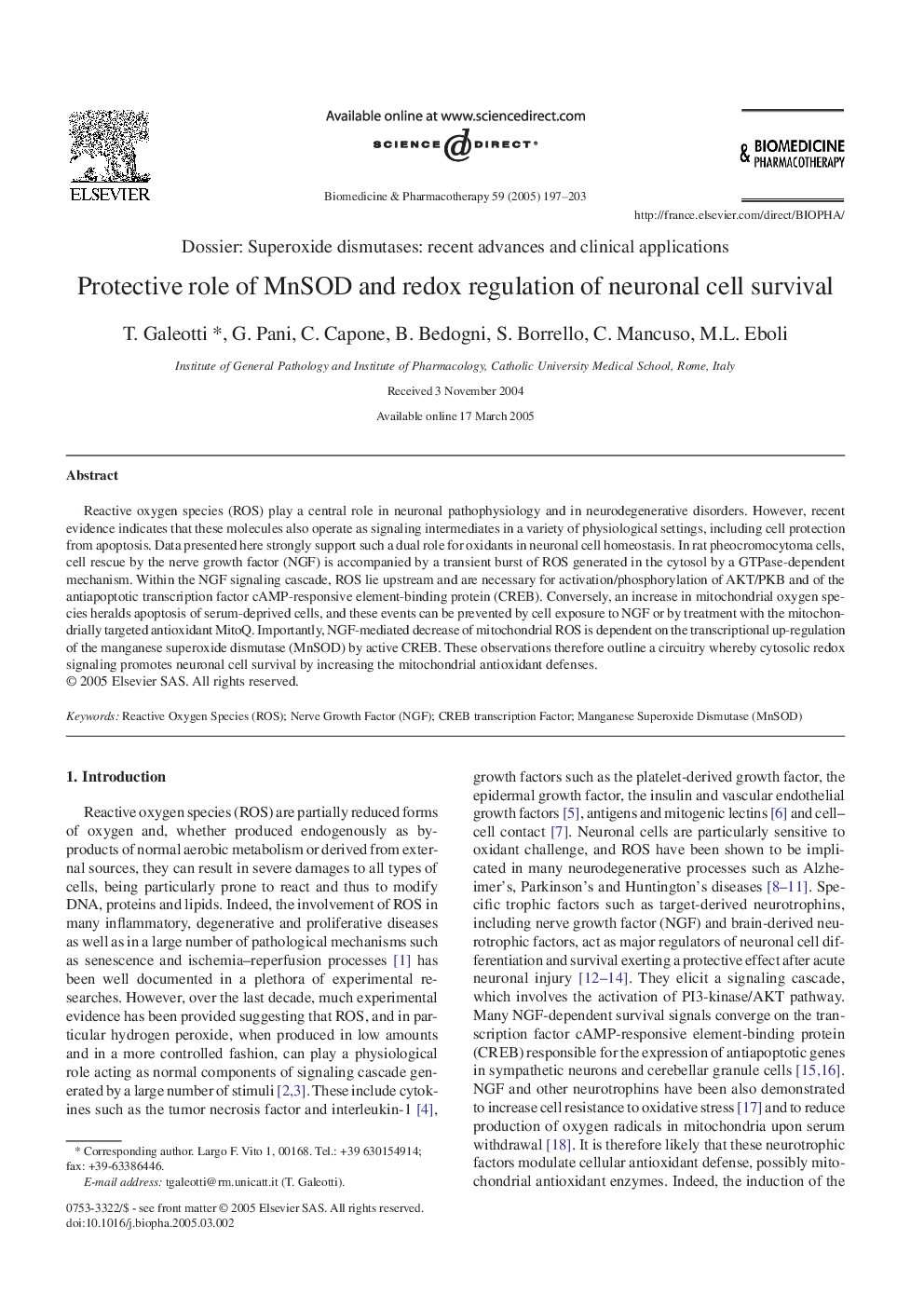| Article ID | Journal | Published Year | Pages | File Type |
|---|---|---|---|---|
| 9004507 | Biomedicine & Pharmacotherapy | 2005 | 7 Pages |
Abstract
Reactive oxygen species (ROS) play a central role in neuronal pathophysiology and in neurodegenerative disorders. However, recent evidence indicates that these molecules also operate as signaling intermediates in a variety of physiological settings, including cell protection from apoptosis. Data presented here strongly support such a dual role for oxidants in neuronal cell homeostasis. In rat pheocromocytoma cells, cell rescue by the nerve growth factor (NGF) is accompanied by a transient burst of ROS generated in the cytosol by a GTPase-dependent mechanism. Within the NGF signaling cascade, ROS lie upstream and are necessary for activation/phosphorylation of AKT/PKB and of the antiapoptotic transcription factor cAMP-responsive element-binding protein (CREB). Conversely, an increase in mitochondrial oxygen species heralds apoptosis of serum-deprived cells, and these events can be prevented by cell exposure to NGF or by treatment with the mitochondrially targeted antioxidant MitoQ. Importantly, NGF-mediated decrease of mitochondrial ROS is dependent on the transcriptional up-regulation of the manganese superoxide dismutase (MnSOD) by active CREB. These observations therefore outline a circuitry whereby cytosolic redox signaling promotes neuronal cell survival by increasing the mitochondrial antioxidant defenses.
Keywords
Related Topics
Health Sciences
Medicine and Dentistry
Oncology
Authors
T. Galeotti, G. Pani, C. Capone, B. Bedogni, S. Borrello, C. Mancuso, M.L. Eboli,
